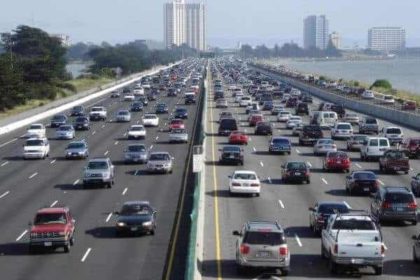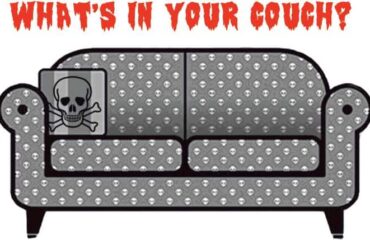Indoor Air Pollution Near Busy Roads

Indoor Air Pollution Near Busy Roads
Freeways and other busy roads are sources of elevated auto emissions and indoor air pollution. These emissions can be harmful to human health for both people on the roads and people working, walking, and living nearby. Nearly 20% of the United States population lives near a high volume road, and many workplaces and schools are located near these roadways.
Indoor Air Pollution
Pollutants associated with, or directly emitted from, vehicles on these roads include carbon monoxide, nitrogen oxides, fine particulate matter, ozone, sulfur oxides, and benzene, as well as hundreds of other chemicals. These pollutants, as well as other pollutants found near roadways have been associated with adverse health effects.
According to the EPA, adverse health effects that are associated with proximity to busy roads include asthma, cardiovascular disease, reduced lung function, impaired lung development in children, pre-term and low birth weight infants, childhood leukemia, and premature death. An individual’s risk depends on his or her current health status, age, and the amount of exposure to air pollutants. People with asthma and other respiratory diseases, or are more susceptible to heart attacks and strokes are more at risk. Children and older adults are also among those at higher risk for health impacts from traffic emission pollutants.
Exposure to indoor air pollution, however, varies based on specific conditions. Typically, pollutant concentrations decrease with distance away from traffic, although the degree of this decrease varies. Wind direction and speed, terrain conditions, and time of day influence the distance and direction pollutants travel. Sound walls and natural and man made windbreaks also have an impact on pollutant dispersion. Generally, the highest pollutant concentrations are found downwind of roadways and tend to decrease to background levels within 500-600 feet of the roadway. Increased traffic, stop and go movement, and low wind speed usually result in increased pollutant levels.
Building design also affects occupant pollution exposure. Maintaining and improving filtration systems in mechanically ventilated buildings can reduce exposure. In addition, new buildings can be designed to minimize the effects to at-risk people by including adequate filtration in ventilation systems and keeping occupants as far away from the roadways as possible when not indoors.
Steps can also be taken by individuals to reduce exposure to auto emissions. A portable true HEPA filter installed in occupied areas helps remove particulate matter and other pollutants from the air. Certain plants can also reduce pollutant concentrations. Walking/running/spending time away from busy roads also decreases exposure to pollutants. Drivers and passengers on the roads may reduce their exposure by closing car windows when in traffic or simply by avoiding busy and congested roads as much as possible.
More information on this topic can be found below:
From the EPA:
https://www3.epa.gov/otaq/nearroadway.htm
From the CDC:
https://www.cdc.gov/mmwr/preview/mmwrhtml/su6203a8.htm
Healthy Building Science is an environmental consulting firm providing indoor air quality testing services for commercial, multi-family buildings, offices, industrial and manufacturing workplaces, hospitals and medical facilities, and single-family homes in the greater San Francisco Bay Area and all of Northern California.
We would be pleased to become your go-to air quality consultant and help you with any of your air quality lab testing or air quality monitoring needs.




